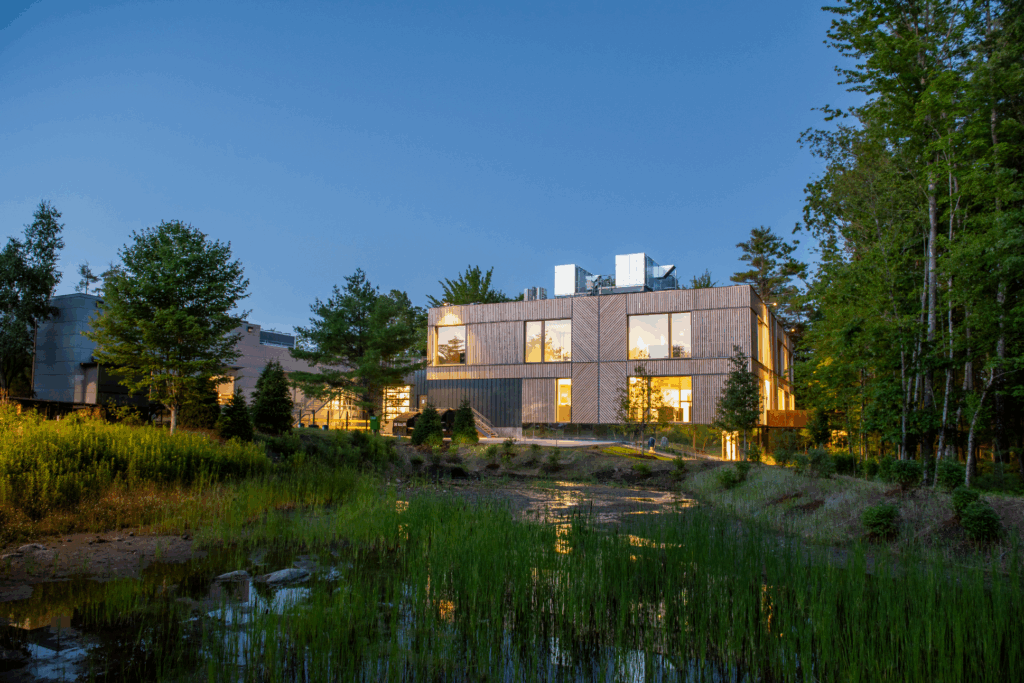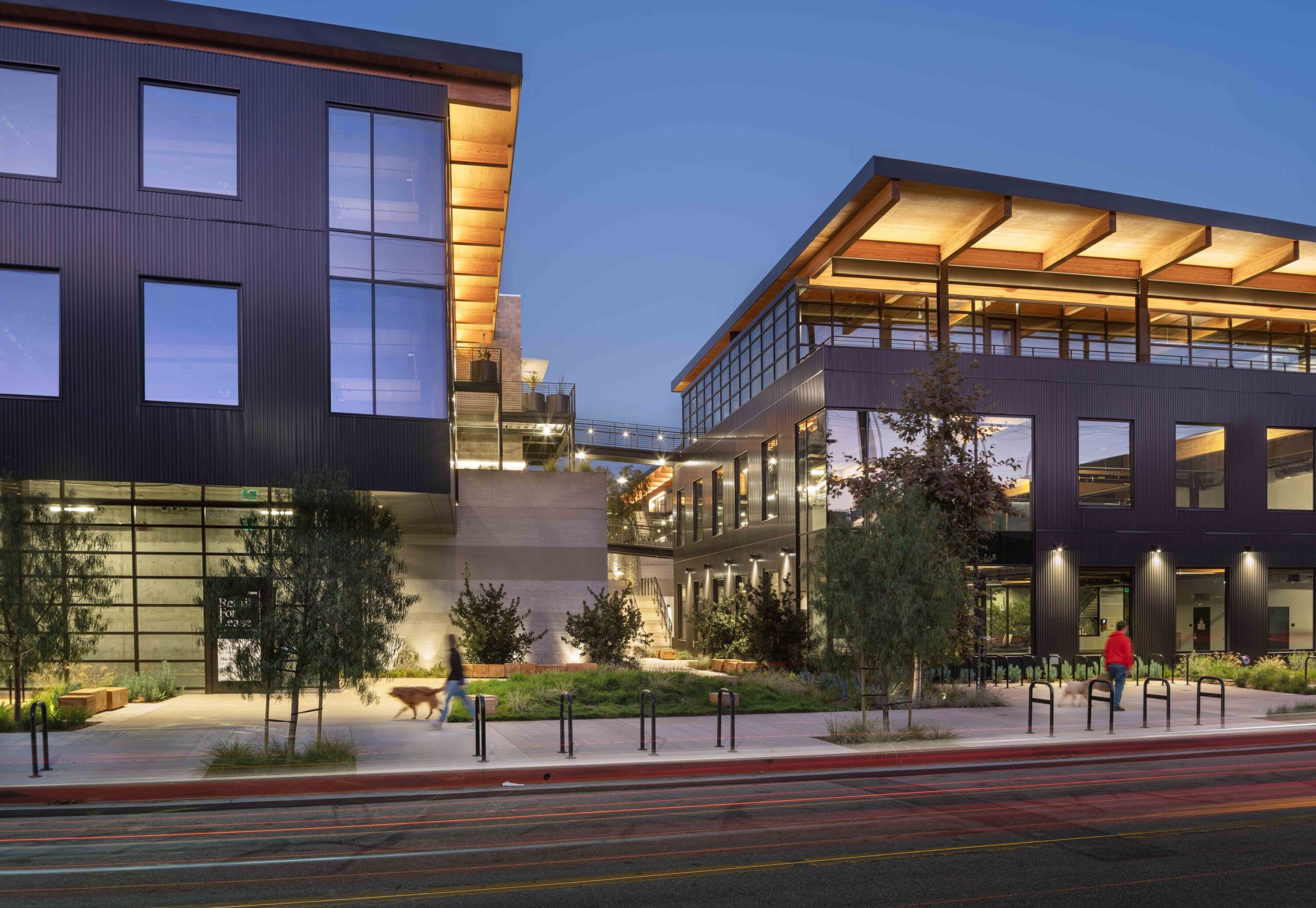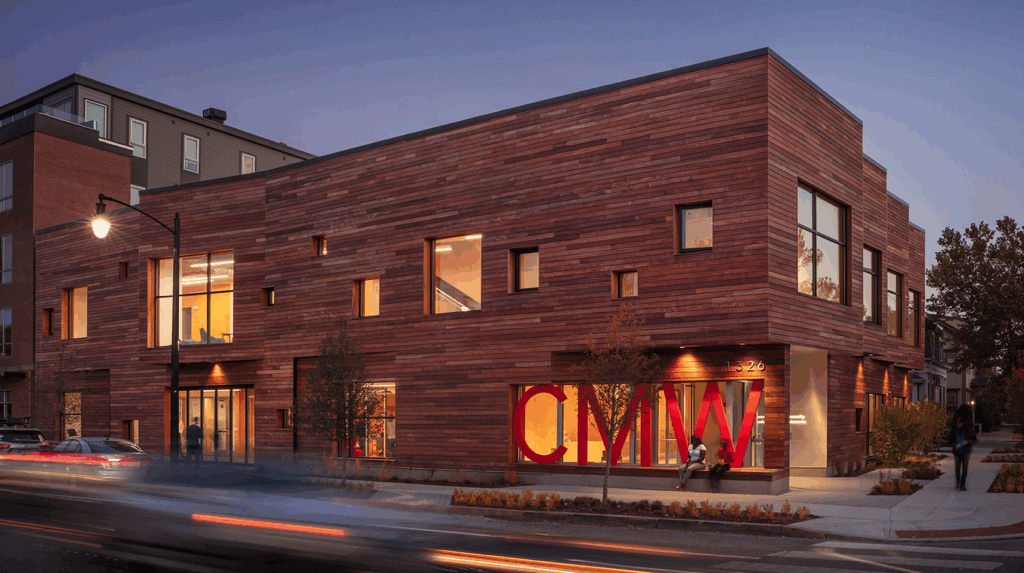Commercial, Mass Timber, Sustainability
Butler Square
Built over one hundred years ago as a warehouse for the Butler Brothers Company, Butler Square is a nine-story historic tall timber building in Minneapolis, Minnesota that demonstrates that wood withstands the test of time.
Timber post-and-beam construction was used to meet the warehouse’s heavy loading requirement and showcases mass timber’s inherent strength and durability. Today, Butler Square continues to operate as a vibrant sought-after mixed-use office building with modern amenities and sustainable design features.

At the time of construction in 1908, the tall timber nine-story 500,000 square foot Butler Brothers Building was the largest wholesale warehouse west of Chicago. Twice as long as it is wide, the building is divided in half by a 3′ thick firewall. When it was completed, the Minneapolis Journal described it as “one of the most commanding buildings in Minneapolis.”
The building served as a warehouse and distribution center until the late 1950s. In 1971, the building was added to the National Register of Historic Places. Four years later, developer Charles Coyer teamed up with Miller Hanson Westerback Bell Architects to restore the aging warehouse and transform it into a mixed-use office retail complex. The 1974 renovation played a significant role in the revitalization of the Warehouse District in Minneapolis. In 1980, further renovations increased available occupancy and in recent years, the building has been retrofit to improve its operating and energy efficiency.

Wood Use
Built by T. B. Walker and designed by architect Harry W. Jones, the heavy timber post-and-beam construction provided the 300 pound per square foot loading requirements of the warehouse. Walker’s own tree farm and lumber mill supplied the building’s Douglas fir timbers that were precut and put together on a module measuring 14′ by 16′. In 1974, renovations added a central atrium and raised floors to preserve the natural wood ceilings.
This mass timber construction and mill decking design, now known as Nail-laminated timber (NLT), has reemerged as a strong, sustainable alternative to steel and concrete. The more recently constructed T3 timber high-rise nearby pays homage to Butler Square and this tried and tested structural technology.
Environmental Impact
Ongoing efforts have been made to make the facility sustainable. Butler Square was the first century-old, multi-tenant commercial building in the nation to achieve LEED-EB O&M certification (Existing Building Operations and Maintenance), the oldest building in Minnesota and Midwest to achieve LEED certification, and the first building in Minnesota to be certified under the LEED-ED O&M.
Project Details
- Original Architect (1908)
- Harry W. Jones
- Renovation Architects (1974)
- Miller Hanson, Westerback, Bell Architects
- Location
- Minneapolis, MN
- Date Completed
- 1908 | Substantial renovations in 1974
- Original Contractor (1908)
- T. B. Walker
- Renovation by Developer (1974)
- Charles Coyer
- Owner
- Butler Properties LCC
- Project Website
- Butler Square









